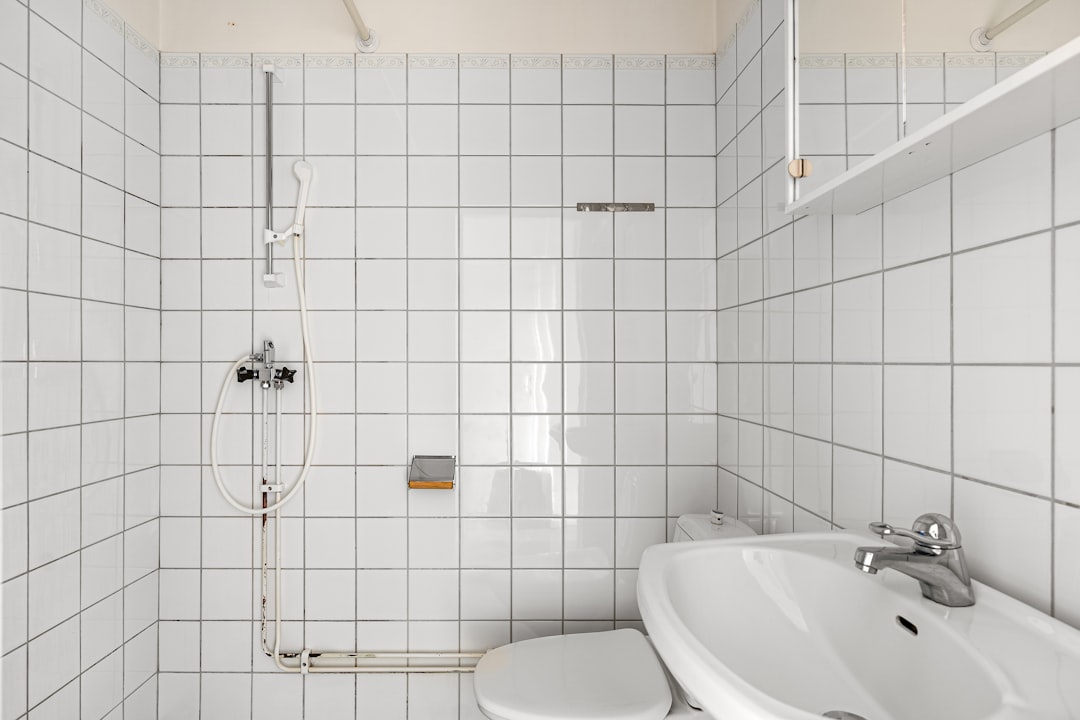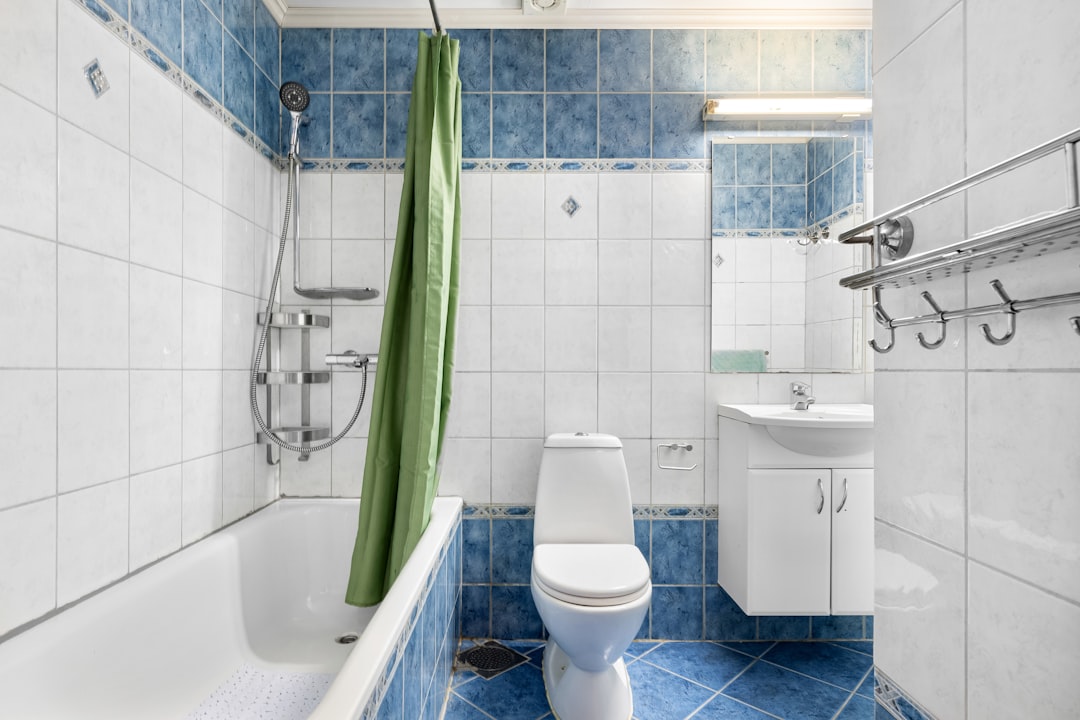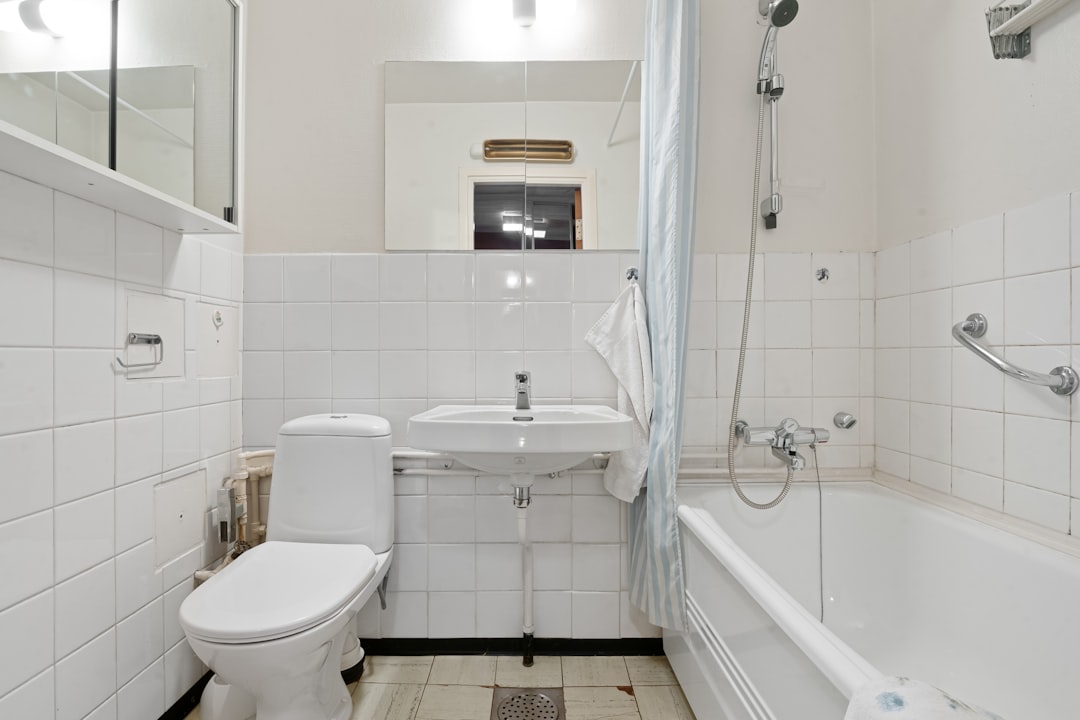

Engage prospects with a scan and streamline customer engagement with FREE QR code marketing tools by Sona – no strings attached!
Create a Free QR CodeFree consultation

No commitment

Engage prospects with a scan and streamline customer engagement with FREE QR code marketing tools by Sona – no strings attached!
Create a Free QR CodeFree consultation

No commitment
Across the plumbing planning services field, bridging the gap between offline engagement and digital workflows remains a persistent challenge. Printed service brochures, manual intake forms, and static appointment cards often leave marketers and operations leaders without visibility into who is interacting with their brand and where critical opportunities may be missed. Many high-value prospects explore services without ever submitting a form, leading to untracked interest in the CRM and missed revenue.
Modern QR code solutions are pivotal in addressing these challenges. Solutions like Sona QR empower plumbing service providers to replace outdated paperwork, enable instant access to project documentation, and deliver targeted, trackable touchpoints without creating barriers for customers. Industry leaders are using QR codes not just for convenience, as shown in plumbing marketing moves, but as a way to identify who is engaging with each asset, opening direct lines for follow-up and timely outreach before competitors can intervene.
Strategically embedding QR codes in marketing collateral, operations signage, and regulatory documents allows plumbing planning services teams to drive higher engagement, accelerate customer acquisition, and uncover actionable analytics. The framework below demonstrates how these businesses are leveraging QR codes to optimize customer engagement, comply seamlessly with regulations, and connect analog actions to predictable growth outcomes.

Efforts to digitize the customer journey frequently stall at the first hurdle. Manual processes for project proposals, permit applications, or pre-visit questionnaires—see Google Forms guide—create delays, misplaced submissions, and missed opportunities for follow-up. When intake relies on pen-and-paper, there is no automatic logging of interest, which leaves qualified prospects invisible to sales and operations teams.
QR codes bridge the gap by converting every printed or physical asset into a digital entry point. With one scan, a client can access an interactive planning tool, upload documentation, or book a consultation. For plumbing planners, that single action triggers trackable events in the CRM, enabling real-time outreach and a clear picture of where each prospect stands. It also reduces friction for clients who want accurate guidance and rapid responses without navigating long forms or searching for a specific webpage.
For example, introducing QR-linked digital forms in place of manual paperwork enables plumbing businesses to speed up intake processes and auto-enrich the CRM with scan data. Many teams see faster time to quote, fewer abandoned submissions, and better compliance with regulatory steps because clients respond more reliably to convenient digital prompts. Firms that roll out QR-led onboarding commonly report onboarding tasks completed 30 to 40 percent faster, fewer data entry errors, and a measurable lift in consultation bookings. Start creating QR codes for free.

A persistent barrier in plumbing planning is the inability to channel offline touchpoints like printed plans, brochures, or compliance materials directly into digital engagement. When businesses cannot identify who interacts with their assets, valuable leads remain anonymous and unpursued, leaving teams blind to purchase intent and unable to act quickly. The result is a funnel with significant leakage and marketing investments that are hard to attribute to revenue. See revenue attribution for why this matters.
QR codes connect physical materials to dynamic online experiences such as self-service portals, quote tools, or permit application workflows. Real-time tracking gives operations leaders essential visibility. They can immediately assess which marketing assets or compliance triggers drive action and where attention is required. The ability to update destination links as project needs change without reprinting is another advantage that keeps information current and reduces operational friction.
The impact is practical and immediate. Placing QR codes on service proposals, appointment reminders, vehicle wraps, trade show handouts, and compliance signage ensures every marketing dollar is measurable and every interaction is attributable. Instead of hoping a prospect remembers a URL or phone number, a scan provides a direct path to action. This builds a data-driven outreach strategy where teams engage at the right moment and tailor messages to the specific context of each scan.

In the pursuit of higher-value leads and streamlined operations, plumbing planning teams depend on QR code versatility but may struggle to select the best format for each scenario. Problems arise when static QR codes become outdated or when tracking data lacks context to differentiate intent among scan sources. Choosing the right format and mapping it to the right destination is essential for performance and maintainability.
Dynamic QR codes are particularly useful for content that changes often, such as regulatory instructions, project timelines, or pricing updates. Because the destination URL can be modified without altering the printed code, campaigns remain agile and accurate. Static codes can still have a place for evergreen materials, but teams should weigh the tradeoffs in traceability and flexibility.
With Sona QR, you can generate each of these formats, assign meaningful metadata, and manage them centrally. Dynamic codes created in Sona can be updated at any time, tagged by channel, and linked to analytics and attribution in Sona for a full view from scan to revenue.

Many plumbing planning brands miss growth opportunities by concentrating QR codes in only a few conventional placements. True impact comes from aligning QR access with moments of interest in the field and in the office. Teams that look closely at friction points often discover high-traffic moments where scanning feels natural, useful, and immediate. For inspiration, see plumbing marketing ideas.
The goal is to make the journey to digital engagement clear and simple whenever interest emerges. That includes community events, on packaging, in proposal packets, and in direct mail that lands on the decision maker’s desk. It also means highlighting the benefits of scanning so that clients know what they get in return: an estimate, a checklist, a permit update, or a direct contact.
By focusing QR integrations on these high-visibility, transition-prone areas, plumbing planning services can solve the missed prospects problem, accelerate deal cycles, and build stronger pipelines based on measurable engagement.

Delays and missed touchpoints in onboarding or compliance can lead to dissatisfied clients, lost upsell opportunities, and regulatory issues. Paper-based processes are a common culprit because they are hard to track, audit, or scale without errors. QR codes give both clients and teams fast access to the right digital action, while providing marketers and operations leaders with visibility.
A strong QR program maps use cases to business goals. Start with three to five recurring workflows that generate value when they move quickly, then connect each to a QR destination that is clear, short, and useful. Measure performance on each code so you can tune content, CTA, and placement.
Together, these solutions help plumbing firms identify at-risk accounts, deliver targeted upsell or cross-sell offers at the right moment, and avoid leaving revenue on the table due to unanalyzed customer activity. Teams can see which clients are engaging, which documents are reviewed, and where to focus outreach.
A major challenge for plumbing planning services is building segmented audiences based on true buyer interest, not assumptions. Relying on form fills alone ignores the signals hidden in everyday interactions such as scanning a permit checklist on a job site or downloading a planning guide from a mailer. Each scan indicates a context, a need, and a level of urgency that can guide your next action. See plumber digital marketing strategies.
By deploying multiple QR codes across touchpoints, you can segment audiences automatically and use those segments to power precise retargeting and follow-up campaigns, powered by intent-driven retargeting. The more specific the code and call to action, the more useful the resulting segment. With Sona QR, you can sync segments to your CRM and ad platforms to run nurture sequences, send timely notifications, and alert sales when buying signals are strong.
This structured approach turns one-time scans into persistent audience signals. You can prioritize timely outreach to high-intent contacts, reduce spend on broad campaigns, and improve responsiveness when moments of need appear.
Most plumbing planning services struggle to measure how offline and online efforts work together. Without linking field signage, printed materials, and digital communications, valuable touchpoints remain disconnected and marketers cannot tie revenue back to specific actions or assets. QR codes serve as the connective tissue that binds these channels into a single, measurable system.
When each code is tied to a campaign, placement, and goal, every scan becomes a data point you can act on. Use a unified dashboard like Sona QR to view performance across channels, then adjust budgets and creative based on what converts. Over time, you will see how a prospect’s journey crosses collateral types, from first scan at an event to final scan on a pricing sheet.
QR codes turn your field marketing into a connected funnel. With a centralized platform like Sona QR, you can manage all codes, monitor performance, and sync scan data with your CRM and ad platforms. This gives teams a full view of which messages and placements drive engagement, and how that engagement turns into pipeline and revenue.
Start by defining a specific business outcome. For plumbing planning teams, common goals include accelerating appointment bookings, simplifying permit submissions, or converting post-event interest into qualified consultations. The clearer the outcome, the easier it is to design a QR-enabled flow that removes friction and captures the right data.
Think vertical and segment-specific. A commercial project manager might need a streamlined compliance submission to prevent delays, while a homeowner needs a simple way to share photos and measurements before a site visit. Pick one use case, articulate the primary action you want, and draft the minimal steps a user should take after scanning.
Choose between static and dynamic QR codes. Static works for fixed destinations that rarely change and where tracking is not essential. Dynamic is ideal when you want editability, full analytics, and the ability to route scanners based on campaign rules. For most marketing and operations use cases in plumbing planning, dynamic is the safer choice because it protects you from reprinting when links or forms change.
Map the code type to the content cadence. If you are routing to an evergreen planning guide, static might be fine. If you are linking to a permit checklist that updates quarterly or to event-specific offers, dynamic gives you flexibility and precise attribution.
Design affects scannability and conversion. Add your logo, brand colors, and a frame that contrasts well with the background. Include a short, benefit-driven CTA within a few centimeters of the code so users know what they will get after scanning. Remember that many scans occur at awkward angles or distances, so choose a size that fits the environment.
Testing is non-negotiable. Test on multiple devices, at different angles and distances, and under varying lighting conditions. If deploying outdoors, consider UV-resistant materials and place codes above mud and snow lines. If deploying on vehicles, ensure the code is large enough to be scanned from a reasonable distance and at low speeds.
Roll out codes where they align with real-world behavior. In plumbing planning, the highest-impact placements typically include compliance signage, appointment reminders, proposal packets, site fences, fleet vehicles, trade show booths, and post-service thank-you notes. Each placement should have a slightly different CTA and destination based on intent and lifecycle stage.
Stagger deployment to learn quickly. Start with a few placements in each channel, monitor scan and conversion rates, and iterate on design, CTA, and destination. Use different codes for each channel and asset so you can attribute performance accurately.
Tracking turns scans into learning. Use tools like Sona QR to monitor scans by time, location, device, and channel. Layer in conversion tracking on the destination page so you can see not just who scanned, but who completed the desired action. Identify friction points and fix them, such as long forms, unclear CTAs, or slow-loading pages.
Optimization is ongoing. A/B test landing page headlines, form lengths, and CTAs. Experiment with different code frames and messages across placements. Use cohort data to understand how residential versus commercial audiences respond, and adjust offers accordingly. Feed insights back into creative and media planning so your mix gets smarter over time.
Modern platforms automate each step, linking scan data and audience segmentation so no engagement signal is missed and campaign ROI is measurable. With the right toolkit, you can move from experiments to a scaled, always-on QR program that feeds your pipeline with qualified, contextual demand.
A continuing challenge for plumbing planning services is connecting specific touchpoints such as flyers, booth visits, and on-site signage back to real revenue. Without detailed analytics on who scanned what and when, teams struggle to prove campaign effectiveness or allocate budgets effectively. Scans without context are interesting, but they do not tell you whether a code led to a form fill, a sales conversation, or a closed deal.
Advanced QR platforms track scan details including device, location, time, and channel, then integrate that data with your CRM. This enables multi-touch attribution that reveals which assets drive meaningful actions. When scan data is paired with website behavior, email engagement, and sales milestones, operations leaders can prioritize prospects by purchase intent, trigger follow-up at the optimal moment, and spot upsell or cross-sell opportunities earlier.
For instance, a spike in scans of a commercial permit checklist within a specific ZIP code can signal new construction or retrofit projects. Sales can prioritize outreach to facility managers who engaged, while marketing amplifies related content. Over time, the organization learns which codes are reliable leading indicators of revenue and shifts spend toward them.
With Sona QR and Sona.com, you can unify fragmented touchpoints across buying stages and build a complete picture of progression from first scan to purchase readiness. This turns QR engagement into actionable insights that guide media mix, creative strategy, and staffing plans.
Scaling a QR strategy means going beyond one-off placements and building systems that capture demand wherever it appears. The most successful teams pair strong execution with process rigor: unique codes for each asset, clear CTAs, tight integrations, and continuous education for staff and customers. Small improvements at each step compound into significant gains in speed, conversion, and attribution.
Focus on the media that matters most in your day-to-day operations. For plumbing planning, that often means proposal folders, site signage, fleet branding, and direct mail. Design each code for the environment where it will be scanned, then reinforce it with staff prompts and simple messaging.
A creative example particularly suited to this industry: include QR codes on post-project thank-you cards that direct clients to leave a review and refer a colleague. Another high-impact placement is invoices for recurring inspections; a QR code can let property managers schedule the next visit or request a quote for upgrades with one scan.
Plumbing planning services face real obstacles in tracking, converting, and upselling clients when offline and online touchpoints operate independently. By introducing QR-driven workflows, every proposal, permit submission, and service feedback moment becomes a traceable opportunity for timely engagement and revenue growth. With real-time analytics and CRM integration, companies can prioritize leads with genuine intent, minimize lost opportunities, and refine their strategy based on clear ROI.
QR codes are redefining how plumbing planning teams bridge the gap between in-person interactions and digital processes. With deeper insight into every customer touchpoint, operations and marketing can capture high-value leads, automate compliance steps, and reliably link campaigns to revenue outcomes. With Sona QR, you have the tools to generate and manage codes at scale, measure performance in one place, and connect scans to pipeline on Sona.com. Start with a single use case, learn from the data, and expand across channels to build a data-rich, customer-centric engine for scalable growth. Start creating QR codes for free.
QR codes have revolutionized plumbing planning services by transforming complex project details into instantly accessible, interactive resources. Whether it’s streamlining communication between contractors, enabling quick access to up-to-date blueprints, or improving client engagement, QR codes replace cumbersome paperwork with seamless, mobile-friendly solutions that enhance accuracy and efficiency on every job site. Imagine having every plumbing schematic and update at your fingertips, eliminating costly delays and misunderstandings.
With Sona QR, you can create dynamic, trackable QR codes in seconds that update in real time—no need to reprint plans or documents. Every scan delivers valuable insights into project progress and stakeholder engagement, helping you optimize workflows and ensure timely, successful project completion. Start for free with Sona QR today and turn every scan into a smarter, more connected plumbing planning experience.
QR codes convert printed and physical materials into digital entry points that enable instant access to planning tools, document uploads, and appointment bookings, while providing trackable data for timely follow-up and better customer visibility.
Effective strategies include embedding QR codes in brochures, job site signage, vehicle wraps, trade show materials, and direct mail to capture leads, segment audiences, and connect offline touchpoints to digital engagement with measurable results.
Using QR codes to digitize project proposals, permit applications, and intake forms automates data collection, enriches CRM records, accelerates response times, and reduces errors for more efficient service management.
Innovative uses include placing QR codes on compliance signage, waiting room posters, field vehicles, event materials, and post-service reports to drive engagement, gather feedback, enable digital approvals, and capture high-intent leads.
Integrating dynamic QR codes with CRM and marketing platforms allows for real-time scan tracking, audience segmentation, automated follow-up, multi-touch attribution, and data-driven optimization to improve customer journeys and revenue outcomes.
Use Sona QR's trackable codes to improve customer acquisition and engagement today.
Create Your FREE Trackable QR Code in SecondsJoin results-focused teams combining Sona Platform automation with advanced Google Ads strategies to scale lead generation

Connect your existing CRM

Free Account Enrichment

No setup fees
No commitment required

Free consultation

Get a custom Google Ads roadmap for your business






Launch campaigns that generate qualified leads in 30 days or less.
